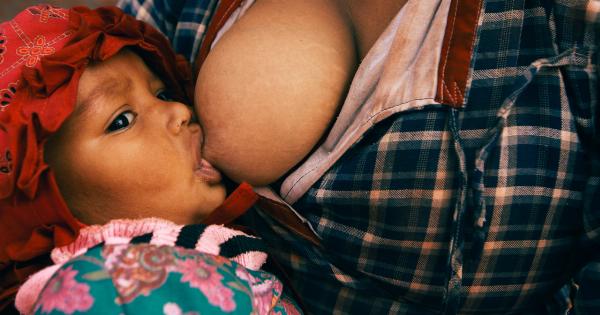Mastitis is a common condition in breastfeeding moms that occurs when the breast tissue becomes inflamed and infected. This can cause pain, swelling, and redness in the affected breast, as well as flu-like symptoms such as fever and chills.
Mastitis can be a frustrating and painful experience for new mothers, but there are effective treatments available to help manage and alleviate symptoms. If you are struggling with mastitis, here is the ultimate guide to treating this condition:.
1. Understand the Causes
Mastitis is most commonly caused by a bacterial infection in the breast tissue, which can occur when milk is not adequately drained from the breast.
This can happen when a baby is not feeding well or when you are not fully emptying the breast during pumping or hand expression. Other common causes of mastitis include blocked milk ducts, overly tight bras or clothing, or taking certain medications.
2. Recognize the Symptoms
As mentioned above, mastitis can cause a variety of symptoms, including breast tenderness, swelling, redness, and warmth, fever and chills, pain or a burning sensation while breastfeeding, and a hard lump or thickening in the breast.
These symptoms can develop rapidly and begin to interfere with your daily routine, so it’s essential to recognize them and seek treatment early.
3. Rest and Hydrate
Mastitis can be physically draining, and it’s important to take adequate rest to speed up the recovery process. Resting means taking a break from daily activities that may involve lifting heavy objects or strenuous physical activities.
In addition to rest, hydrating yourself with plenty of water and fluids is critical to maintaining good health duringmastitis.
4. Continue Breastfeeding
While it may seem counterintuitive, continuing to breastfeed is one of the most effective ways to treat mastitis. Breastfeeding helps to drain the breast and can prevent milk from becoming stagnant, reducing the risk of further infection.
Although it may be painful, continue to breastfeed from the affected breast as much as possible.
5. Massage the Breast
Gentle massage of the affected breast can help alleviate pain and swelling and encourage milk flow. Start by applying gentle pressure on the area where you feel swollen or sore and then gradually move your fingers to the nipple.
Massage the area using circular or long strokes to move milk out of the blocked ducts.
6. Warm Compresses
Applying warm compresses to the affected breast several times a day can help reduce pain and swelling. Use a warm, moist cloth or a hot water bottle, or take a warm shower.
Warmth can help stimulate milk flow and loosen any blocked ducts, making mastitis treatment more effective.
7. Pain Medications
In some cases, over-the-counter pain medications such as acetaminophen or ibuprofen can help relieve pain and reduce fever associated with mastitis. Consult your doctor or healthcare provider for dosage and timing recommendations.
8. Antibiotics
If a bacterial infection is the cause of mastitis, your healthcare provider may prescribe antibiotics to help fight the infection.
Antibiotics are typically safe for both you and your baby, but it is important to take the entire course of antibiotics as directed and check with your healthcare provider before taking any medication.
9. Seek Professional Help
If your symptoms do not improve with home remedies or you have severe symptoms, seek immediate medical attention.
Consult with your healthcare provider or a lactation consultant to help evaluate the severity of the infection and recommend further treatment options.
10. Prevent Future Mastitis
Once you have recovered from mastitis, it’s important to take steps to prevent future infections.
Include frequent breastfeeding, wearing comfortable and supportive bras, avoiding tight clothing, and maintaining good hygiene practices to prevent further mastitis.




























